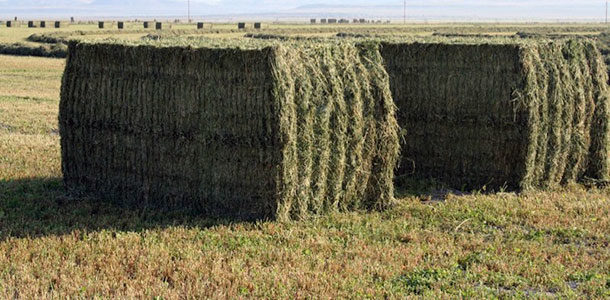The best producers have discovered there is a delicate balance between art and science in making hay, and each has an individual approach to successful hay production.
The common theme is attention to detail in each step, always with a sharp focus on quality – from cutting and conditioning to raking and baling.
I have observed many hay producers over the years, and innovation has been the key in helping producers make a premium hay product. Hay-handling technology has evolved and today’s tools give you the capacity to cut, rake and bale in ways that help beat the weather and create more value in your bales time after time.
Of course, there are a wide variety of methods for harvesting and handling dry hay. Each requires using specific equipment to complete the tasks.
In most parts of the U.S., hay harvest includes the use of a mower, rake and baler. Other important considerations include mower conditioners and tedders. Let’s take a look at each.
Mowing
When it comes to mowing, cutting height preferences have changed in the past few years to allow for more rapid regrowth. In the past, producers cut their standing crop very short, anywhere from 1 inch and below. Today, we are seeing a cutting height of 1.5 to 2 inches, which actually allows for much quicker regrowth.
Cutting a wide swath is also critical to take advantage of the drying effects of sun and wind. More narrow swaths take longer to dry, particularly in humid areas where the environment is not conducive to fast drying. Typically, hay will need to dry for just two or three days for water content to dissipate.
For those more humid areas, the use of a mower conditioner can help, allowing for more rapid drying time when it is critical to avoid the losses in total yield and quality caused by moisture.
The mower conditioner creates a cushion between the hay and the soil so cut material is not lying on the ground itself and air can continue to circulate and dry the hay.
Mowers with counter-rotating blades are great options that help reduce the load per blade and even out the load on the drive. These machines can produce a neat, clean cut every time. With improved overlap – even in wet conditions – the counter-rotating cutting discs make sure there are no strips of uncut forage left in the field.
Tedding
Another method to help speed up the drying process is the use of a tedder; a tedder can help take the lead on beating the weather. The ideal time for tedding hay is within one to two hours after mowing or early in the morning while the dew is still on. This is an ideal step to help chop or bale the forage in time, particularly if the good-weather window is a tight one.
Raking
Next, rakes make it easier to put the hay into windrows and can ensure regular and even swath formation. Today’s rakes are an essential tool in helping hay to dry faster and readying it for the baler at the time of pick-up.
Rakes also help to lift the hay away from the soil, protecting it from mixing with foreign matter and dirt. Producers should rely on rakes to create a swath that not only optimizes the capacity of the baler but also increases the quality of the forage.
Baling
The majority of hay made across the country today is baled hay. Every producer will agree that baling is the most critical step and often the most rushed in order to beat the changing weather conditions that could devalue the bales. With attention to detail in all aspects up to this point, such as cutting, creating a quality windrow and getting the forage up quickly, a good bale density will produce higher-quality bales.
Balers can make large round bales up to 2,650 pounds and that are 4 feet wide and up to 6 feet tall, allowing the producer to handle fewer bales and save time and labor costs from reduced handling needs. Balers come with fast, convenient net wrapping systems fed directly into the bale chamber.
Optimum bale net tension is also an important factor and should always offer the best support for preserving the bale. Technology allows for customized solutions, and multiple baler settings should allow the producer to customize bale density, making it easy to choose the correct bale density for different crops.
For example, when baling dry straw for the heaviest bales possible, producers should have the option of setting the maximum pressure in every zone. For baling hay, a soft center core is ideal to let the bale breathe, so selecting a setting that gradually increases the pressure toward the outer layer is typically preferred.
When baling wet silage, pressure should be reduced in the center and mid-zones so bales can maintain their shape for improved stacking and easier handling.
Separate from the baler, trailed and mounted turntable wrappers can complete the wrapping process with consistent bale rotation even in difficult conditions.
With either manual or computer control, producers should look for wrappers that are easy to operate and have a low dumping height, enabling one operator to manage the whole process of loading, wrapping and stacking.
Last, but certainly not least, it is always best to quickly move the bales to storage. In fact, the sooner the better as dry hay needs to air just a few days. Ideally, bales are moved to storage within a week to maintain quality ... and preparation for the next cutting can begin. FG
Dave Palmer
Product Manager - Hay and Forage Equipment
Kubota Tractor Corp.











